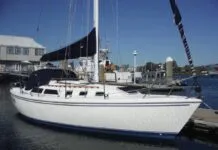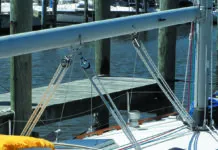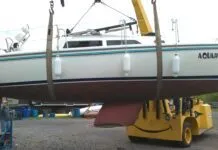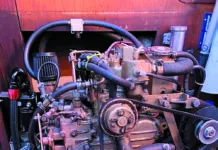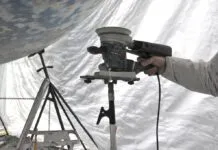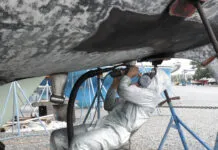Photos by Frank Lanier and courtesy of Firstwatch
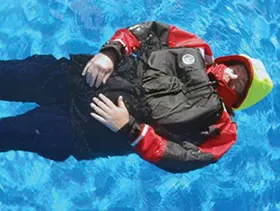
If the first rule of boating is to stay onboard, then the second must be to stay afloat in the event that rule number one is broken. There are several types of products that can help you keep from drowning in an MOB situation, but float coats also offer defense against hypothermia, a real danger in waters below about 70 degrees. Foam-filled float coats also double as foul-weather gear, so users are more likely to wear them to keep warm than they are to don a PFD.
Its been more than five years since our last look at float coats (PS, February 2007), so when Firstwatch came out with two new designs, we saw it as a good opportunity to find out how the new gear measures up. Firstwatch Gear designs high-performance, U.S. Coast Guard-approved personal flotation gear. According to Firstwatch General Manager Ross Johnston, the goal behind the new line was to get flotation safety gear out of the storage locker and actually on the sailor by making the coats comfortable and functional. Firstwatch claims the coats have been tested and approved for conditions ranging from frigid Arctic waters to the tropics, with styles and features to suit all mariners.
What We Tested
Practical Sailor tested two Firstwatch float coats, the Bomber Jacket (AB-1100) and the Flotation Coat (AC-1100). Both are USCG-approved Type III flotation devices available in three color schemes (red/black, orange/grey, and hi-vis yellow/black). The two share a number of construction features. Both have a shell of high-tenacity 210-denier nylon, rugged ripstop nylon in the shoulders and arms, PVC flotation foam, reinforced 500-denier Cordura at the elbows and cuffs, and neoprene-lined wrist cuffs with adjustable Velcro cinch straps on each wrist.
Both feature a high-visibility thermal hood, a 2-inch-wide strip of 3M SOLAS tape over each shoulder, a 1-inch strip on the hood, and a half-inch strip around each wrist. The hood, which tucks into the collar, is hi-vis chartreuse and features elastic cinch lines. The hood and collar are fleece-lined, and a sturdy external loop makes it easy to hang them in a locker. The hand-warmer slash pockets are fleece lined on only one side, which keeps wet, salty hands from sticking to them.
How We Tested
Testers gave both coats a thorough examination, checking out features and assessing the comfort of each. Both coats offered sufficient mobility when dry.
Testers donned the jackets and were sprayed down with a hose to determine whether any water would creep in at the wrists and hood during a blow. Then, we got into the water to see how each functioned as a PFD and to gauge their buoyancy. Testers also weighed the garments while dry and wet. (See accompanying Value Guide on right.)
Photos by Frank Lanier and courtesy of Firstwatch
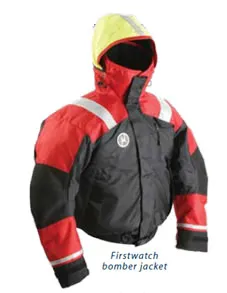
Bomber Jacket
The waist-length Firstwatch Bomber jacket has a sleek, modern design that testers found to be stylish and comfortable, both on and in the water. Testers liked the waist-length cut, which provides an increased range of movement while reducing bulk and binding in the midsection.
The jacket closes by way of a large YKK zipper thats easy to use, even with gloved hands, and a 2-inch wide, Velcro-secured storm flap. A webbing belt inside the jacket helps keep the jackets fitted elastic waistband from riding up while in the wearer is in the water.
Storage space is limited to two pockets and a small, zippered, internal chest pocket and two equipment loops. The internal pocket is large enough to hold a wallet and cell phone, or even a smaller personal locator beacon (PLB). Internal mesh drains at the jacket bottom and wrist cuffs allow water to exit quickly and the inner foam to breathe when the garment is stored.
Testers found the Bomber Jacket very comfortable on shore.
However, the shorter cut means no bottom protection when sitting down on wet seats or a rough deck. It received rating of Good for comfort in the water, as it tended to ride up more than the Flotation Coat.
Testers found that the Bomber Jacket provided very good buoyancy. Like most foam flotation devices, it inhibited testers diving under the water. In a drill to simulate swimming out from under a capsized boat, testers were unable to overcome the Bombers buoyancy. The foam buoyancy also limited in-water mobility, which was to be expected. Testers were pretty much limited to a semi-upright version of the breast stroke or simply floating on their back and kicking.
The Bomber drained a bit faster than the Flotation Coat when exiting the water, and testers found the insulated hood to be comfortable. It could be cinched down snugly about the face, yet provided sufficient adjustments to reduce vision blockage.
Photos by Frank Lanier and courtesy of Firstwatch
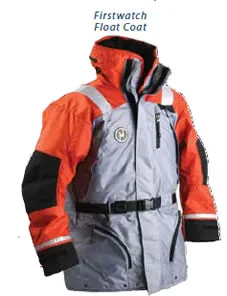
Flotation Coat
While it shares many similarities with the Bomber Jacket, the Flotation Coat also has some unique features. The most obvious is the coats longer length (mid to upper thigh), which sheds water better and allows a wearer to keep his backside dry without having to wear splash pants. One problem often associated with the skirt (the coat part below the waist belt) is that in some coats, it floats up when the wearer is in the water, reducing protection and warmth. To remedy this, Firstwatch added a one-inch, adjustable nylon strap at the hem of the coat. This is in addition to a second, 1-inch adjustable nylon waist belt that is sewn in a dedicated sleeve outside the jacket.
Like the Bomber, the Flotation Coat has an insulated, adjustable hood, mesh drains along the jacket bottom and at the cuffs, a large YKK zipper, and a Velcro storm flap. The zipper terminates eight inches above the bottom of the coat, allowing for more movement when bending and sitting, but the storm flap extends the full length of the coat.
The Flotation Coat trumps the Bomber in storage space: It has two fleece-lined pockets, a zippered internal pocket, and two large, easily accessible cargo pockets. The cargo pockets have drain holes and are zippered. Handheld devices that tend to fall out of slash pockets will fit well in these self-draining cargo pockets.
The Flotation Coat was comfortable in and out of the water and enabled our tester to easily keep his mouth well above the waters surface. As with the Bomber, swimming was limited to a semi-upright version of the breast stroke or floating on the back and kicking.
The coats longer length and second cinch strap at the bottom allows you to close the coat around your legs and sit in the pouch provided by the back of the coat while floating in a stationary position. This not only keeps the coat from riding up, but it also provides support and reduces water flow while floating; reduced water flow means less body-heat loss.
The Bottom Line
Both Firstwatch coats are bulletproof and well suited for nasty weather in colder climates. The flotation panels provide a lot of warmth without being excessively cumbersome, but they are bulkier than standard foul-weather gear.
Priced at $141 for the Bomber and $168 for the coat, the Firstwatch gear is less expensive than most of the float coats weve tested, and they are considerably less than our 2007 Best Choice, the $260 bomber-style Mustang Integrity.
That being said, testers did come up with a few modifications theyd like to see. The first would be zippered side vents to allow fresh air to enter and heat to escape. The existing wrist seals were fairly weather-proof when cinched tightly, but wed like to see separate, adjustable neoprene inner cuffs for more comfort and better protection. Finally, a section of reinforced material along the lower portion of the Flotation Coats skirt would offer added abrasion resistance and traction when seated in a wet cockpit.
Both Firstwatch coats get our Recommendation. In fact, they are on par in every way with the Mustang Integrity, except in price and buoyancy. For its affordable price and top-notch quality, the Firstwatch Bomber gets our Budget Buy pick, the Firstwatch Flotation Coat gets our Recommendation, and the more buoyant Mustang Integrity maintains its spot as the PS Best Choice.




